Consider the following UIView "MainView":

The view includes a Container View which in turn houses a UITableView controller. The container view's y coordinate starts just beneath the gradient bar. The UITableView includes the section footer at very bottom with the 'STU' label and 'chart' button.
When the UIView loads, and up-to-and-until any interaction with the tableView, MainView's dimensions are:
Frame: 0.000000x, 0.000000y, 568.000000w, 268.000000h
I have a delegate protocol set up such that tapping the chart button in the tableView will create a new view in MainView for a shadow effect via a method performing:
CGRect newFrame = self.view.frame; // self = MainView
newFrame.size.width = 100;
newFrame.size.height = 50;
UIView *backgroundShadowView = [[UIView alloc] initWithFrame:newFrame];
backgroundShadowView.backgroundColor = [UIColor blackColor];
// Do Animation
The important part above is the 'newFrame' CGRect. For some reason after interacting with the table view by tapping the chart button, or even scrolling or tapping a row, self.view.frame suddenly has the following dimensions:
Frame: 0.000000x, 52.000000y, 568.000000w, 268.000000h
And so the shadow view appears as follows, with a y origin much farther down than where it would be expected to start, just above the gradient bar.

I've adjusted the width and height of the "shadowview" for this question; normally it would be 568x268, but would extend 52 units off screen on the bottom because of this issue.
52 units is exactly the height of the statusbar (20) + navigationbar_in_landscape (32).
Of course I could manually adjust the frame dimensions, but I do not want to. I want to know why the view's frame is changing unexpectedly.
For the life of me, I cannot figure out why the view becomes suddenly offset. Any help is appreciated!!